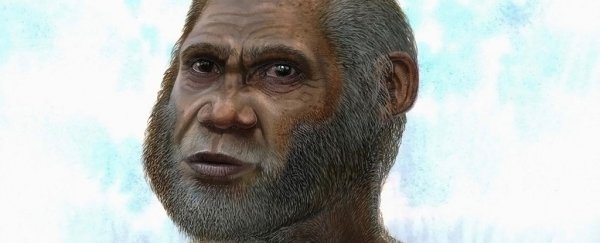Examinations of a 14,000-year-old bone found in China have shed greater light on the existence of the mysterious Red Deer Cave people, suggesting that the ancient species may have survived much longer than was previously believed.
Analysis of a partial femur – which had lain unstudied in a museum in China, along with other fossilised remains from an excavation back in 1989 – has revealed that the thighbone bears a resemblance with those of ancient Homo species, and its age could mean the archaic Red Deer Cave people overlapped with the predecessors of modern humans.
"Its young age suggests the possibility that primitive-looking humans could have survived until very late in our evolution, but we need to be careful as it is just one bone," said Ji Xueping from the Yunnan Institute of Cultural Relics and Archaeology in China, who conducted the study with fellow researchers from the University of New South Wales (UNSW) in Australia.
The thigh bone, excavated from Maludong (meaning "Red Deer Cave") more than 25 years ago, shares certain features that match early human species such as Homo habilis and early Homo erectus that lived more than 1.5 million years ago.
The dating of the new bones indicates that the Red Deer Cave people may have survived up until the end of the last Ice Age about 12,000 years ago – long after the appearance of modern humans in the area.
Nonetheless, the researchers are treating the new discovery with caution, as previously it had been thought that the youngest pre-modern humans on mainland Eurasia, including the Red Deer Cave people, had died out around 40,000 years ago.
"The new find hints at the possibility a pre-modern species may have overlapped in time with modern humans on mainland East Asia, but the case needs to be built up slowly with more bone discoveries," said one of the researchers, Darren Curnoe from UNSW.
The researchers first announced their discovery of the Red Deer Cave people in 2012, and have been examining the remains ever since.
"We published our findings on the skull bones first because we thought they'd be the most revealing, but we were amazed by our studies of the thigh bone, which showed it to be much more primitive than the skulls seem to be," said Ji.
Analysis of the femur remains suggests that the individual was very small, even by pre-modern and Ice Age human standards, with a reconstructed body mass of just 50 kilograms. It's unknown how this primitive group – whose name comes from evidence that they cooked deer for food – lasted quite so long, but the researchers believe it may have to do with the properties of the area in which they lived.
"The unique environment and climate of southwest China resulting from the uplift of the Tibetan Plateau may have provided a refuge for human diversity," said Jui, "perhaps with pre-modern groups surviving very late."
The findings have been published in PLOS ONE.
UNSW Science is a sponsor of ScienceAlert. Find out more about their world-leading research.
